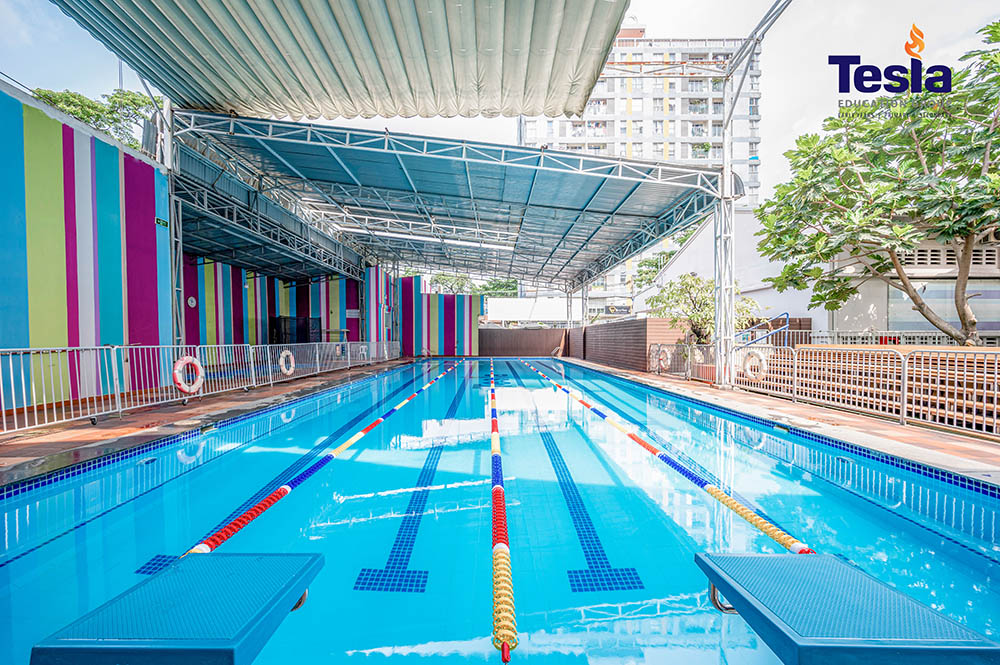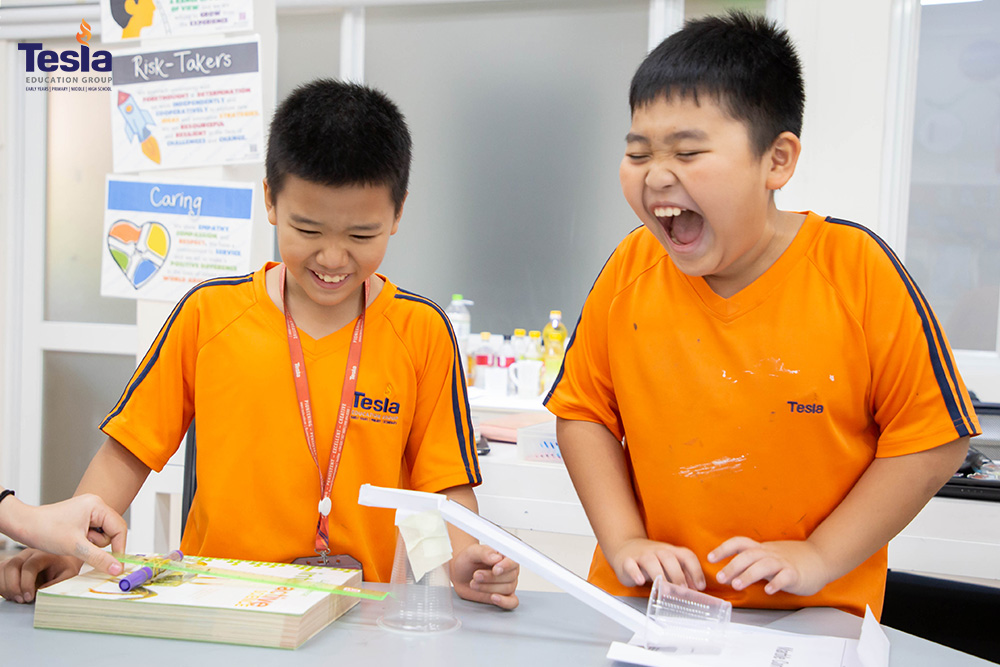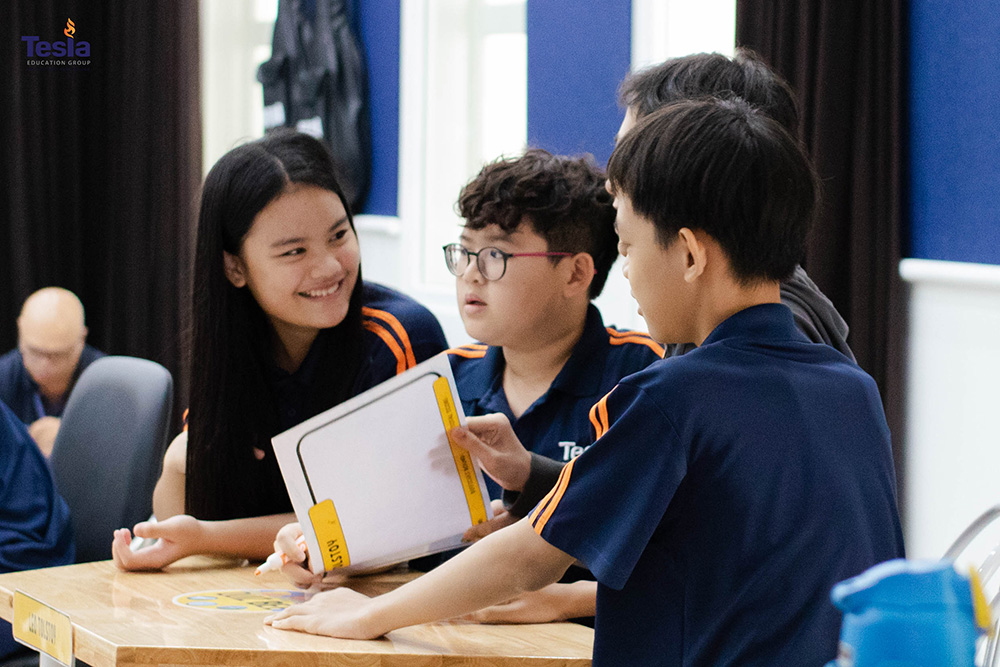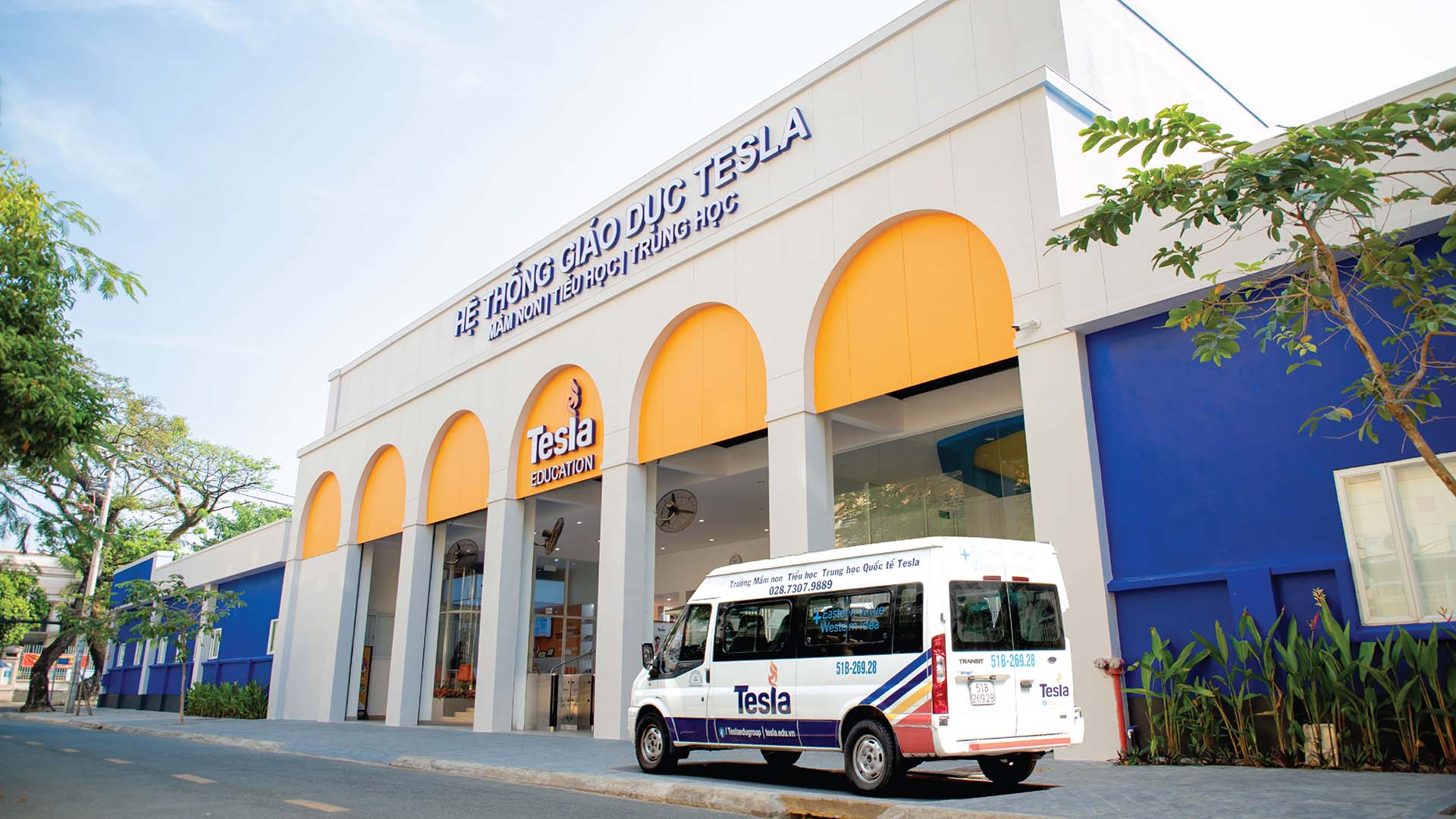Should I send my child to an international school or a bilingual one?
Table of Contents
There isn’t a best educational programme, only one that suits your child’s abilities and future direction. The decision to send your child to an international school or a bilingual one depends on various factors, including your child’s educational orientation, their personal needs, and your family’s financial capabilities.
Comparing to determine whether to send your child to an international school or a bilingual school
Similarities between international schools and bilingual schools:
– Holistic education: Both international schools and bilingual schools often offer a continuum of education, usually ranging from early years to high school. Therefore, after completing each level, students can progress to higher grades within the same school system without the need for extensive procedures to transfer to a new learning environment.
– Multicultural environment: Both international schools and bilingual schools in Ho Chi Minh City create a multicultural learning environment where students are exposed to and learn from various cultures and nationalities. This helps them develop understanding and respect for cultural diversity.
– Holistic educational goals: Both international schools and bilingual schools aim for holistic education for students, starting from bilingual kindergarten, including academic, cultural, and social aspects. This helps students develop not only academically but also in life skills and emotional well-being. This is also a criterion that parents consider when deciding whether to send their child to an international school or a bilingual school.
– Language development focus: Both international schools and bilingual schools focus on developing students’ language skills. Whether teaching English partially or offering bilingual education, language is an important part of both school models.
– Provide diverse learning opportunities and experiences: Both international schools and bilingual schools offer a wide range of learning and development opportunities for students, from academic to extracurricular activities and community projects. This helps students develop their potential and interests.
– Modern facilities: Thanks to substantial investment, both types of educational environments are equipped with modern facilities to best serve teaching and learning. Classrooms are well-built, laboratories and functional rooms are fully equipped. The campuses of bilingual international schools are spacious, emphasizing spaces for movement, entertainment, and recreation for students such as swimming pools, sports fields, gymnasiums, etc., meeting standards to ensure safety and create conditions for comprehensive student development. Facilities are also a factor for parents to consider when deciding whether to send their child to an international school or a bilingual school.

Facilities are a factor for parents to consider whether they should send their children to an international or bilingual school
Differences between bilingual schools and international schools:
| FEATURES | INTERNATIONAL SCHOOLS | BILINGUAL SCHOOLS |
| Curriculum | 100% international curriculum, taught in English. | Combination of the Ministry of Education and Training curriculum with international curriculum. |
| Teaching methodology | Personalized learning paths, promoting the potential of each student. Emphasis on developing international skills, critical thinking, and creativity. | Student-centered approach. Development of soft skills. |
| Teachers | About 60 – 80% are foreign teachers. | About 20 – 40% are foreign teachers. |
| English learning time | 80 – 100% of study time is in English. | 80 – 100% of study time is in English. |
| Outcomes | Internationally recognized qualifications accepted by most universities worldwide. | Completion of the Ministry of Education and Training curriculum and receipt of English proficiency certificate. |

International school students are promoted for comprehensive development
Factors to consider when deciding whether to send your child to an international or bilingual school
1. Family’s educational orientation
The goals of families considering whether to send their child to an international or bilingual school typically fall into two categories: those who plan for their child to study abroad or settle overseas and those who are unsure about their child studying abroad but want to ensure their readiness in all aspects, especially language proficiency and the skills of a global citizen.
For the first group, parents need to focus on whether the school offers internationally recognized programmes and degrees and whether they align with the country their child intends to study in. Therefore, parents may choose either a monolingual international school (100% English) or a bilingual international school (50% – 80% English depending on the learning path). For example, at Tesla Education, the Integrated International Baccalaureate (IB) Programme gradually increases English language instruction from over 50% to 100% across different grades. For the second group, bilingual schools in Ho Chi Minh City are the top choice for providing bilingual education and obtaining both Vietnamese Ministry of Education and Training diplomas and certifications from international organizations.
2. Curriculum
Each school will have its own curriculum, and parents need to consider whether the school they intend to send their child to adopts an educational approach that suits their child’s abilities and the family’s educational goals. Do these methods align with the child’s abilities and the family’s educational goals? In addition to the academic curriculum, children should also participate in recreational activities and real-world experiences to foster creativity and social skills.
3. Tuition fees and financial capability of the family
Tuition fees are always a concern for parents and can influence the decision of whether to send their child to an international or bilingual school. To ensure that their child’s educational path is not disrupted, parents should seek schools with flexible, easily transferable programmes. Even if the child switches to a public school, they should still be able to adapt and excel in their studies. This is also the advantage that helps Tesla Education gain satisfaction and peace of mind from parents. With the continuous Integrated International Baccalaureate (IB) Programme from early years to high school, students not only ensure the value of their diplomas but also have the flexibility to transfer to other school models while keeping up with the curriculum and teaching methods.
4. Quality of teachers
The teaching staff directly influence the development of students at school. Therefore, parents need to understand the teaching staff to decide whether to send their child to an international or bilingual school. Teachers should have high professional qualifications, teaching experience, and good ethical standards. In bilingual international schools, students learn under the guidance and companionship of experienced teachers with creative teaching methods. The team of foreign and Vietnamese teachers collaborates closely to provide a curriculum that meets the needs of students and academic standards, making learning more engaging for students..

International school teachers are highly qualified
Tesla Education – Holistic development, becoming global citizens
Among the bilingual international schools in Vietnam, Tesla Education is highly regarded by many parents for its reputation and quality. Tesla offers education from early years to high school. At Tesla, students learn in an international environment with modern facilities and a team of highly qualified teachers with international teaching certificates.
Some distinguishing features at Tesla Education that parents should consider when deciding whether to send their children to an international or bilingual school:
1. Curriculum: Tesla Education teaches the Integrated International Baccalaureate (IB) Programme. With the Integrated IB Programme implemented from early years to high school, Tesla nurtures a generation of students with broad international thinking, strong skills, and pride in Vietnamese culture. Students not only possess globally recognized IB diplomas but also develop strongly in language and culture. From here, they will be well-prepared for university and future career development.
2. Facilities: All rooms at Tesla Education are modernly designed, fully equipped with tools and equipment to support students’ learning process.
3. Teaching staff: Selected with high standards, with academic qualifications or international certificates, ensuring quality education for students.
To answer the question of whether to send your child to an international or bilingual school, parents need to consider the above factors to find the school that meets their family’s desires, is economically feasible, and ensures a stable and long-term learning path for their children.







